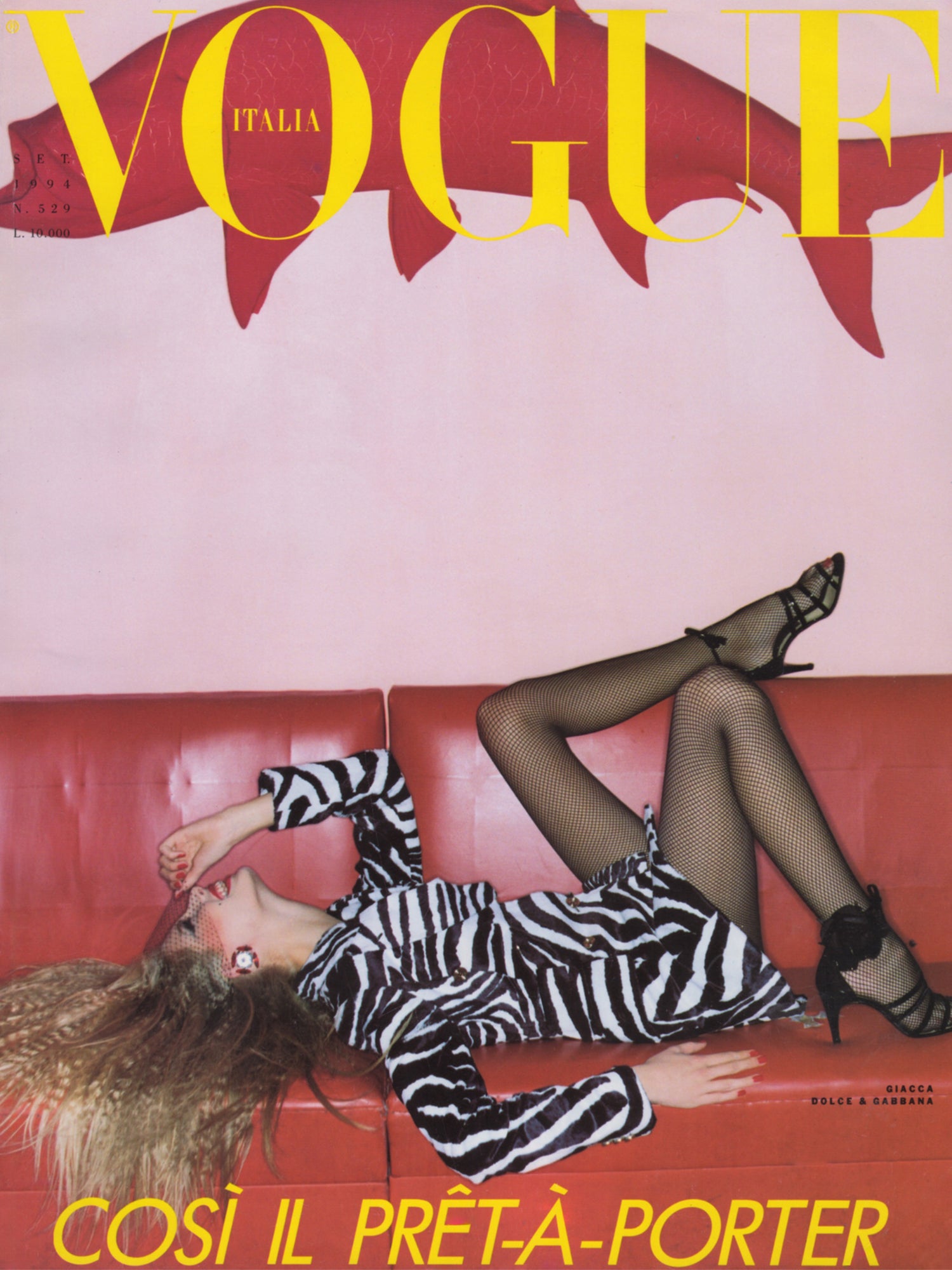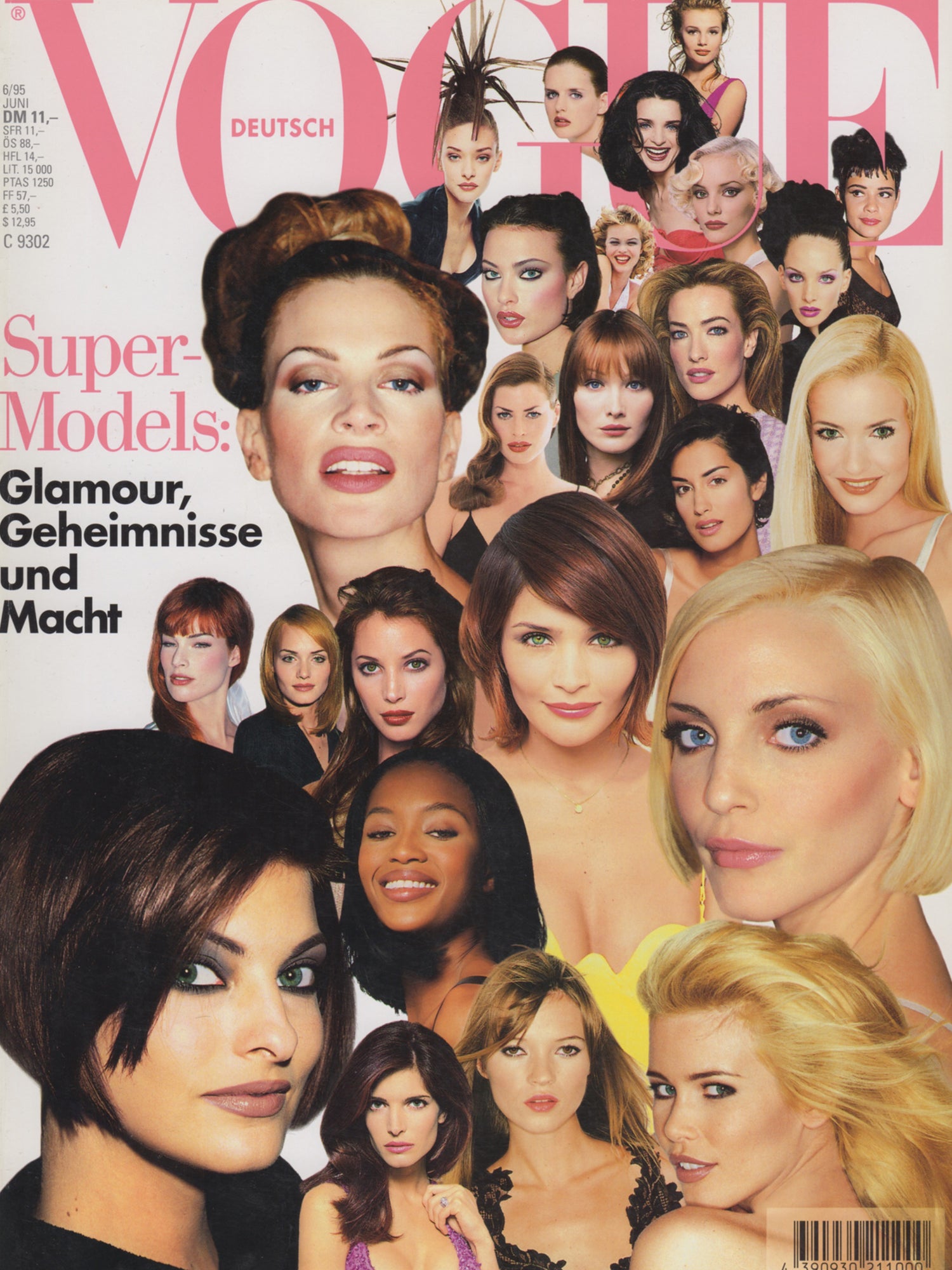Collapsible content

Supermodels, Grunge, and Minimalism: The 1990s Fashion Shift
The 1990s began with echoes of opulence and traditionally feminine styles, remnants of the bold fashion statements of the 1980s. However, as the decade progressed, a shift toward diverse cultural influences took hold, driven by the music scene and youth culture, including grunge, techno, and the rise of "girl power." At the same time, minimalism emerged as a dominant force in fashion, and this pared-back aesthetic would shape the entire decade. Gianni Versace’s designs are a prime example of this transformation. Starting the decade with baroque opulence and colorful maximalism, his creations gradually evolved into sleek, more restrained silhouettes. Versace, alongside other major designers, also helped turn the 1990s into the era of the supermodel. Icons like Claudia Schiffer, Cindy Crawford, Linda Evangelista, and Naomi Campbell became global stars, earning astronomical fees for their work.
Meanwhile, the rise of grunge (championed by designers like Marc Jacobs) and the meteoric success of Kate Moss embodied the anti-glamour ethos of the time. Moss, with her waifish figure, popularized the controversial heroin chic look, which contrasted sharply with the previous decade's focus on tall, curvaceous supermodels. Moss’s rise paved the way for more unconventional beauties, including Karen Elson, Maggie Rizer, and Audrey Marnay. Calvin Klein was at the forefront of this shift, propelling Kate Moss into the spotlight with his provocative campaigns for the perfume Obsession and his minimalist underwear ads. Along with designers like Jil Sander and Helmut Lang, Klein was a pioneer of the minimalism trend that dominated the 1990s. By the late 1990s, fashion had become so stripped down that the minimalist aesthetic peaked around 1998, where styles couldn't get more pared-back. However, as the new millennium approached, fashion began to embrace hints of romance and playful frills once again.
In the 1990s, traditional ideas of femininity and conservative dressing were quickly discarded in favor of a focus on youth and sensuality. This shift was reflected in the departure of established couturiers such as Hubert de Givenchy and Yves Saint Laurent, whose designs epitomized more classical femininity. At the same time, many traditional fashion houses began hiring younger, more provocative designers. Givenchy enlisted Alexander McQueen, Christian Dior appointed John Galliano, and Gucci hired Tom Ford, all of whom infused sex appeal and a daring edge into their collections. This bold new direction would continue to evolve and reach its peak in the early 2000s.
Currently no items for sale.
Dive Into the Fashion Milestones of the 1990s and Discover How Each Year Shaped the Couture World. Click to Explore!
The 1990s Fashion Chronicles: Discover the Year's Major Trends and Designers

